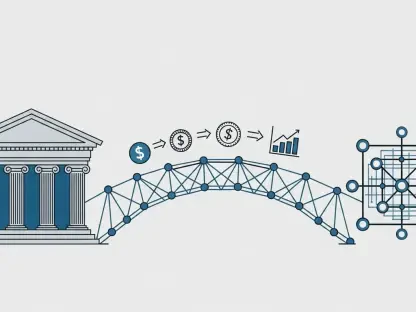The financial landscape is experiencing rapid transformations as discussions around asset tokenization gain momentum, particularly following recent developments between the U.S. Securities and Exchange Commission (SEC) and Citadel Securities. This marks a pivotal moment where traditional finance paradigms are increasingly adopting blockchain technology, presenting new opportunities for efficiency, liquidity, and the democratization of asset ownership. Asset tokenization involves converting real-world assets such as property, stocks, and bonds into digital tokens, which can then be managed, exchanged, and owned fractionally using blockchain. The implications of this shift are vast, poised to reshape how value is created, transferred, and preserved within financial markets. As industry leaders and regulatory bodies explore this burgeoning frontier, the dialogue centers around creating supportive frameworks that can integrate and capitalize on the benefits of tokenized securities, ultimately aiming to enhance market functionality and accessibility.
Institutional Interest and Regulatory Evolution
A notable indicator of asset tokenization’s potential is its growing appeal among major institutional players, illustrated by the interaction between the SEC and Citadel Securities, key figures in modern finance. This collaboration suggests an ongoing move toward establishing regulatory guidelines that can seamlessly incorporate blockchain-based solutions, thus encouraging a broader adoption of tokenized assets. Citadel Securities, renowned for its expertise in equities and high-frequency trading, is well-positioned to spearhead the integration of these technologies into existing frameworks. The prospect of tokenized securities gaining traction aligns with a broader trend where companies are keen to harness the transformative capabilities of blockchain to boost trading volumes, transparency, and operational efficiency. As a result, tokenization is not merely viewed as a technological novelty but as a strategic pivot for future-forward financial operations.
Platforms like Ethereum and Solana emerge as critical nodes in this network, providing robust infrastructures for tokenization protocols that facilitate secure and efficient transactions. Ethereum, in particular, has established itself as a pivotal player in this space, enabling innovative projects and expanding the utility of tokenized assets within diverse sectors. Industry observers expect that with regulatory support, platforms specializing in real-world asset tokens will attract substantial investments, potentially reaching billions. Market participants are closely monitoring developments, with a keen interest in how these evolutions could drive price movements and investment decisions. Consequently, the conversation around asset tokenization is shifting from theoretical exploration to tangible implementation, reflecting a significant shift in the financial industry’s outlook on cryptocurrency and blockchain applications.
Technological Integration and Market Dynamics
As the landscape for asset tokenization unfolds, there is a pronounced emphasis on the interplay between technological innovations and market dynamics. The fusion of stock market insights with blockchain capabilities could redefine the boundaries of digital transactions, leveraging the prowess of enterprises like Citadel to enhance the efficiency and reach of tokenized products. The advancement of tokenized stock derivatives exemplifies this trend, as they present new avenues for investment, increasingly popular among tech-savvy investors seeking diversified portfolio options. Tokens like Ethereum’s Chainlink are at the forefront, providing the necessary infrastructure to support these complex financial instruments, thereby opening up greater potential for liquidity and market participation.
Moreover, tokenization protocols have shown notable growth in transaction volumes and user interactions, signaling an increased adoption rate that investors and traders find compelling. There is a growing narrative suggesting that strategic investments in tokenization could pay significant dividends, especially for those taking long positions in ETH/BTC pairs amidst increasing market activity. At the same time, the volatile nature of these markets demands vigilance and strategic planning, with investors advised to employ safeguards such as stop-loss orders and consider diversifying into stablecoins to mitigate risk. The effective deployment of artificial intelligence in optimizing trades further exemplifies the innovative strides being made within this sector, highlighting AI tokens like Fetch.ai as emerging players that streamline decision-making and enhance predictability in volatile environments.
Strategic Outlook and Future Possibilities
The financial world is undergoing significant changes, as interest in asset tokenization grows, driven by recent interactions between the U.S. Securities and Exchange Commission (SEC) and Citadel Securities. This is a crucial period where traditional financial systems are increasingly integrating blockchain technology, creating fresh opportunities for enhanced efficiency, liquidity, and wider asset ownership. Asset tokenization turns tangible assets like property, stocks, and bonds into digital tokens, which can be easily traded, managed, and owned in fractional parts via blockchain. The potential impact of this evolution is extensive, promising to transform how financial markets generate, transfer, and maintain value. Leaders in the industry and regulatory entities are delving into this emerging domain, focusing on establishing supportive frameworks that harness the advantages of tokenized assets. The ultimate goal is to boost market operations and make them more accessible, paving the way for a more inclusive financial environment.









